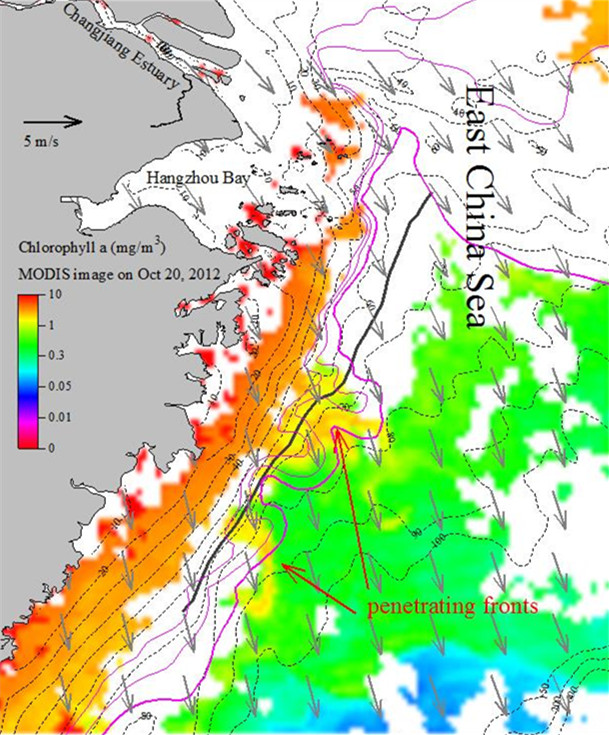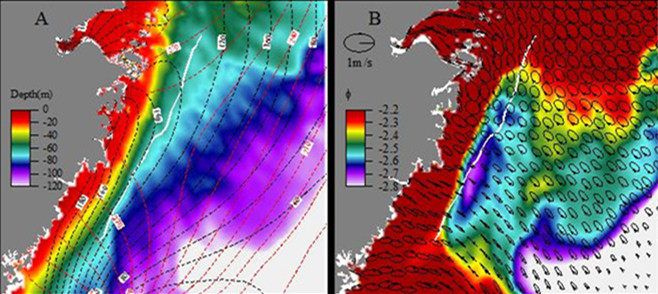Cross-shelf penetrating fronts: a response of buoyant coastal water to ambient pycnocline undulation
Offshore-penetrating tongues of coastal water have been frequently observed during the downwelling-favorable monsoon season at specific locations in waters off the Min-Zhe Coast, a region influenced by a buoyant coastal current originating from the Changjiang River. This process plays an important role in cross-shelf material exchange in the East China Sea (ECS), but the underlying mechanisms are not fully understood. This study suggests that the penetrating fronts are the response of buoyant coastal water to along-isobath undulation of the ambient pycnocline that is controlled by the temperature stratification in seawater. When the ambient pycnocline descends sharply in the downshelf direction, coastal water is transported offshore due to the joint effect of baroclinicity and relief (JEBAR), and thus generates a penetrating front. Along-isobath pycnocline undulation in the ECS can arise from nonuniform tidal mixing due to tidal wave divergence off the Min-Zhe Coast. Onshelf intrusion of cold and dense Kuroshio subsurface water prevents thorough mixing of the pycnocline. Different from the common cross-shelf transport phenomena induced by winds or frontal instabilities, such a tidal mechanism should produce penetrating fronts at specific locations, in agreement with observations.
Topography of Min-Zhe coastal waters overlaid with MODIS images of chlorophyll-a on 20 October 2012. The chlorophyll-a data illustrate the location of nutrient-rich coastal water influenced by the Changjiang River plume. The purple contours denote the modeled surface salinity on 20 October 2012, with values of 30.5, 31.5, and 32.5 psu. The arrows index the mean wind during the 5 days before 20 October 2012.
(a) Cophase (red dashed) and coamplitude (black dashed) lines of the M2 constituent in Min-Zhe coastal water. (b) Tidal ellipses of the M2 constituent with the rotation direction indicated, and the Simpson and Hunter parameter / that indexes the mixing intensity.
List of relate results:
-
Cross-shelf penetrating fronts: a response of buoyant coastal water to ambient pycnocline undulationJournal of Geophysical Research: Oceans , 2015 , 120(7): 5101-5119


